BHogan
Sergeant Major
- Joined
- Nov 2, 2010
- Messages
- 1,984
Have you guys seens this yet it looks great!
http://www.toysoldiersclub.com/Toy-soldiers_LEUTZ-10_.aspx
http://www.toysoldiersclub.com/Toy-soldiers_LEUTZ-10_.aspx
Yes,
the images of the 3 pieces have already been posted in another thread in the Forum.
Check out about 3 other images there.
So far we haven't seen the painted versions, but John emailed me a couple of weeks back saying the masters were done, so thats very promising.
John
Thank you for posting this link. The picture on this link shows at a higher photo resolution when you click on it.
Does anyone know if the parts will be sold separately or only as one set?
King’s Man
...Does anyone know if the parts will be sold separately or only as one set?
King’s Man
I would hope separately.
I am not "yet" into this series but I can see multipe uses of the two end pieces. Plus I would think with multiple pieces you could arrange and re-arrange to suit any scene. AND ... cheeper at a time. --- Larry
I recall seeing a huge diorama of Leuthan done with 30mm flats at the Zinnfiguren Museum at Plassenburg Castle in Kulmbach Germany. All of the buildings and scenery were well detailed and in full round. I would love to see some images of it now as I didn't take any pictures when I was there last.
Ken
I recall seeing a huge diorama of Leuthan done with 30mm flats at the Zinnfiguren Museum at Plassenburg Castle in Kulmbach Germany. All of the buildings and scenery were well detailed and in full round. I would love to see some images of it now as I didn't take any pictures when I was there last.
Ken
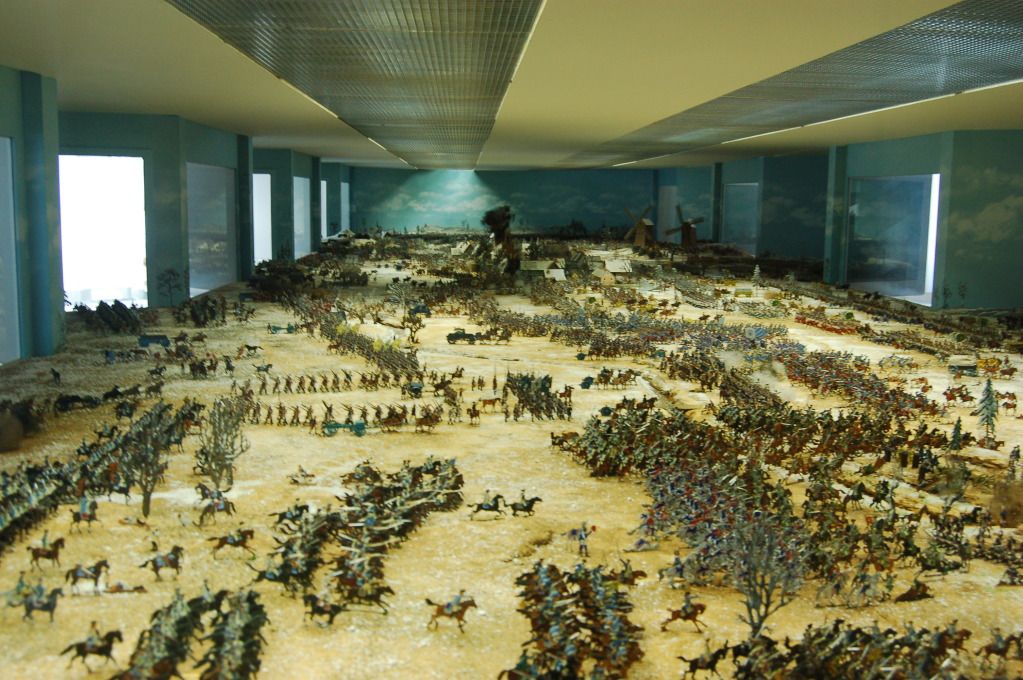
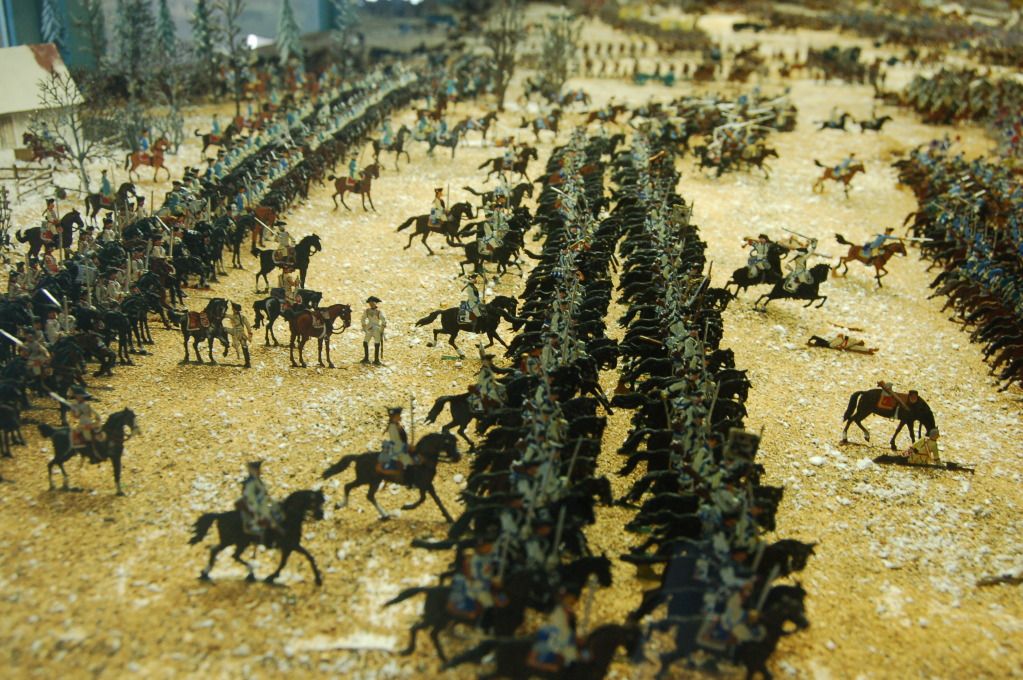
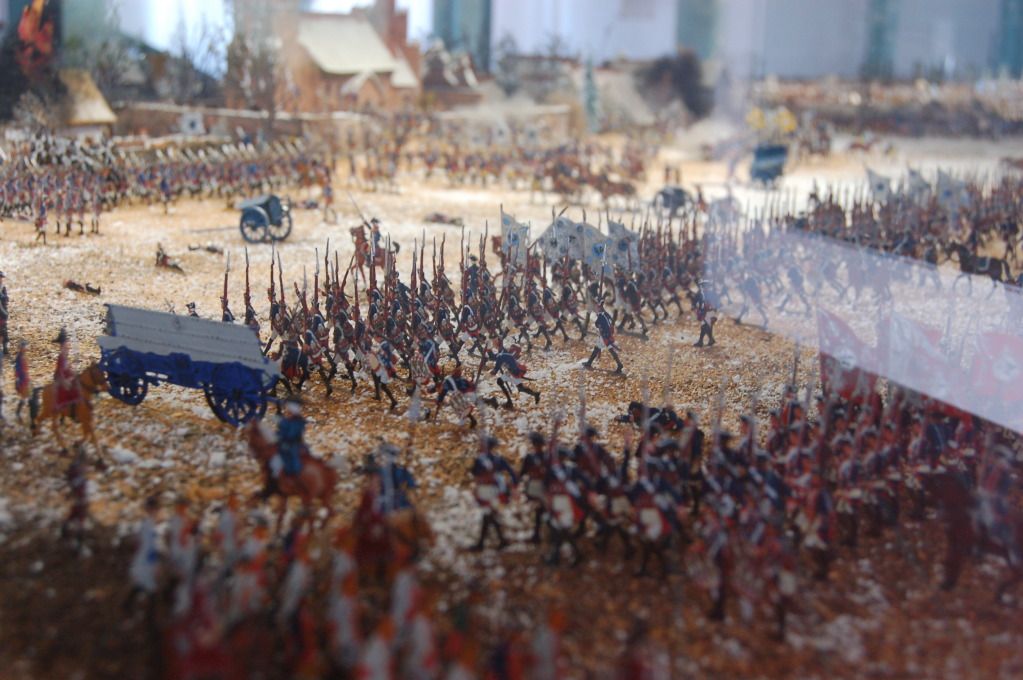
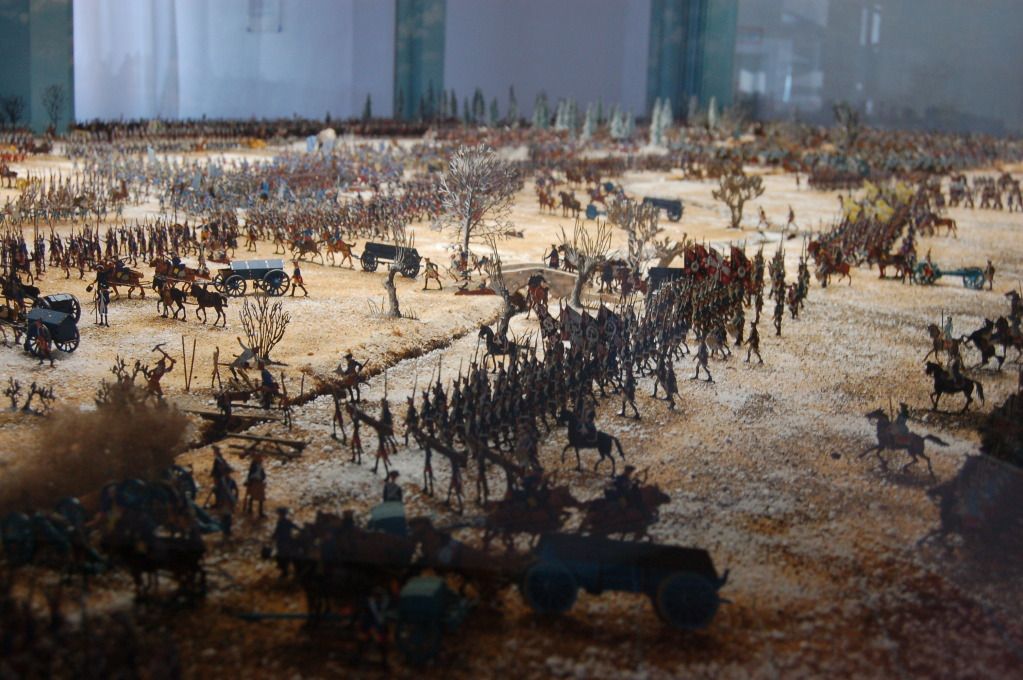

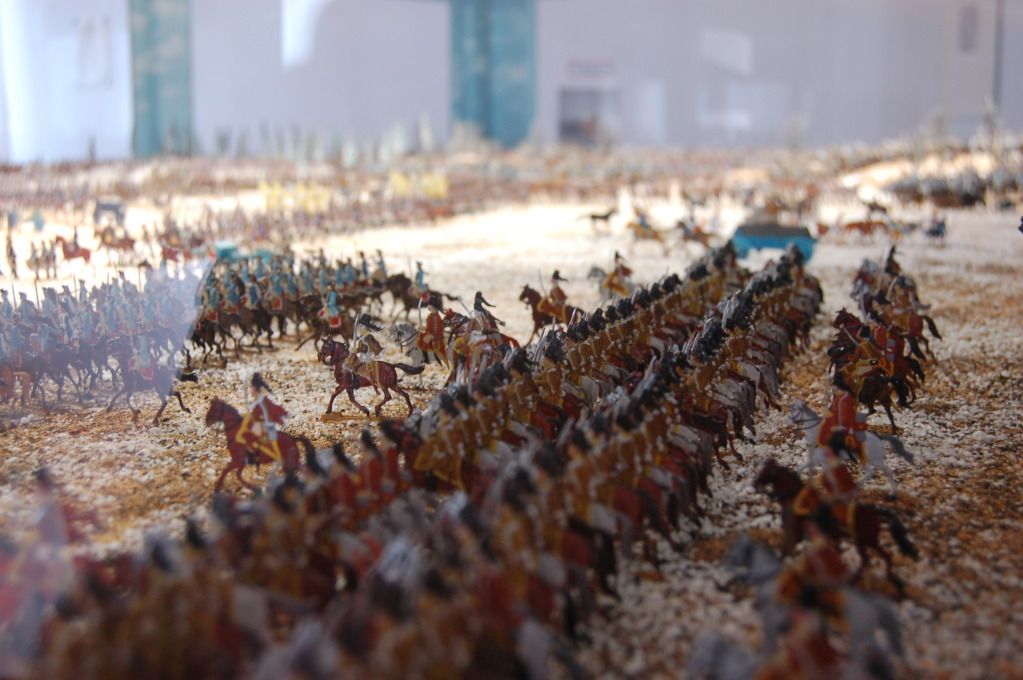
Bear in mind that the battlefield is actually a couple of miles long.
The Austrian army, having just taken Breslau, proceeded to the west to meet Frederick's army, advancing eastward after the victory at Rossbach. The Austrian commander, Prince Charles of Lorraine, took up a position centered on the village of Leuthen, with his lines extending to the north and to the south.
Frederick's approach took his army to a position due west or slightly above due west of the Austrian center. At that point, he sent a small detachment towards the Austrians as a feint, taking the rest of his army south, parallel to the Austrian lines, and screened from view by a series of low hills. At a point slightly south of the end of the Austrian lines, he implemented his Oblique order, sending the army in succeeding echelons against the Austrian left (ie, the end of their lines). The end of the Austrian lines included several units of Imperial troops, Wuerttembergers, who gradually gave way and the Austrian line slowly crumbled back on the center. Austrian cavalry charged the Prussians but were counter-charged and driven back. Eventually, when they had realized the true focus of the Prussian attack, the Austrian line had reformed, still centered more or less on Leuthen, but now rotated 90 degrees and oriented from west to east. It is at this point that the assault on the village began, including storming the churchyard. The two field battalions of Frederick's Garde and the Grenadier-Garde led the assault, against fierce Austrian opposition. Eventually the remainder of the refused Prussian battalions were sent to support the assault, and the Austrians were driven out of the village by mid-afternoon. The Austrian cavalry tried another charge to drive the Prussians back, but were again counter-charged. The Austrian infantry formed another line north of Leuthen and tried to halt the Prussian advacne, but were driven back yet again The Prussians pursued the Austrians northeast of Leuthen, halting at the village of Lissa a couple of miles away. The Austrians fell back on Breslau, and eventually the defeat caused them to retreat from Silesia back into Bohemia.
Austrian losses were about 6500 killed and 21,500 captured, of an army of 70,000. The Prussians lost 1100 of about 28,000. The battle is considered the best example of the application of the Oblique order.
Prost!
Brad
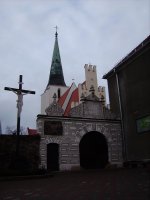
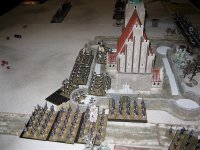
This is one nice thread.
All the pictures are most interesting.
Here is a pic from the Osprey Campaign book "Rossbach and Leuthen 1757".
The diorama shown is the one that Ken Osen mentioned, the one displayed in the "Deutsches Zinnfigurenmuseum" in the Plassenburg, Kulmbach, Germany.
Konrad
This is one nice thread.
All the pictures are most interesting.
Here is a pic from the Osprey Campaign book "Rossbach and Leuthen 1757".
The diorama shown is the one that Ken Osen mentioned, the one displayed in the "Deutsches Zinnfigurenmuseum" in the Plassenburg, Kulmbach, Germany.
Konrad

